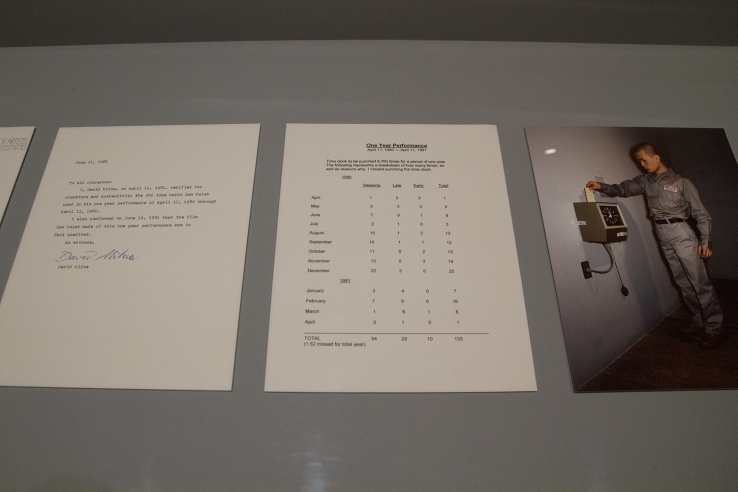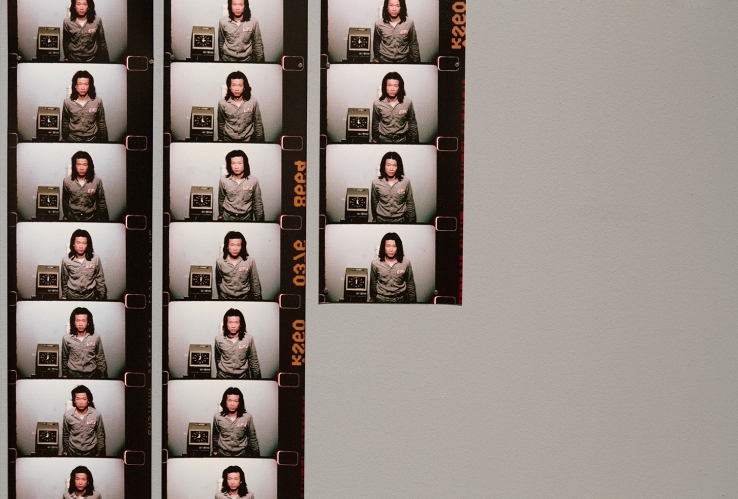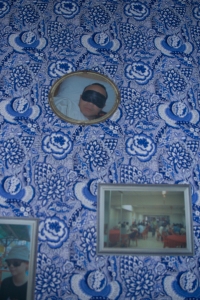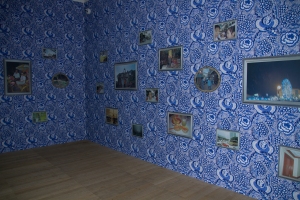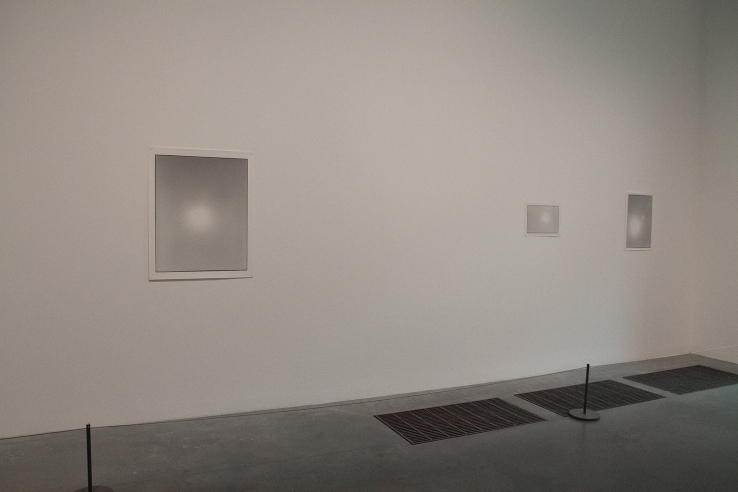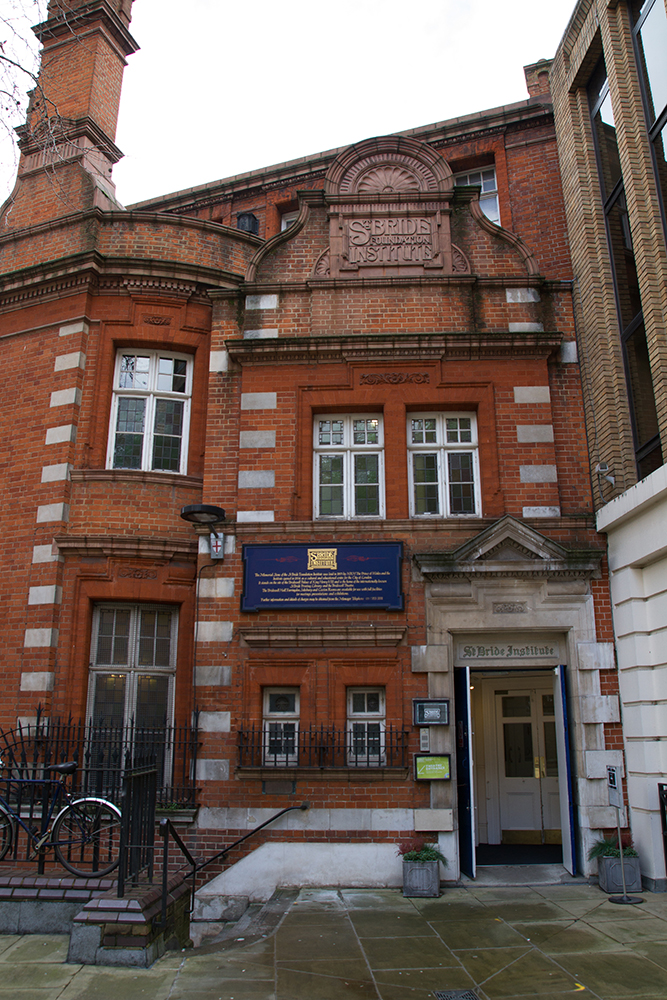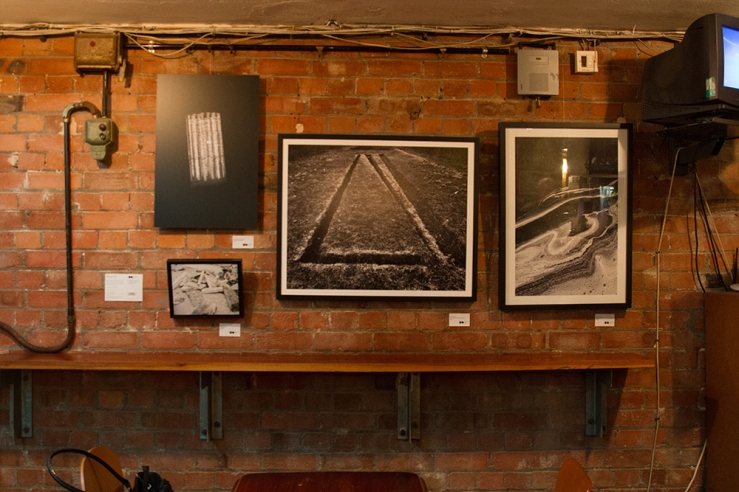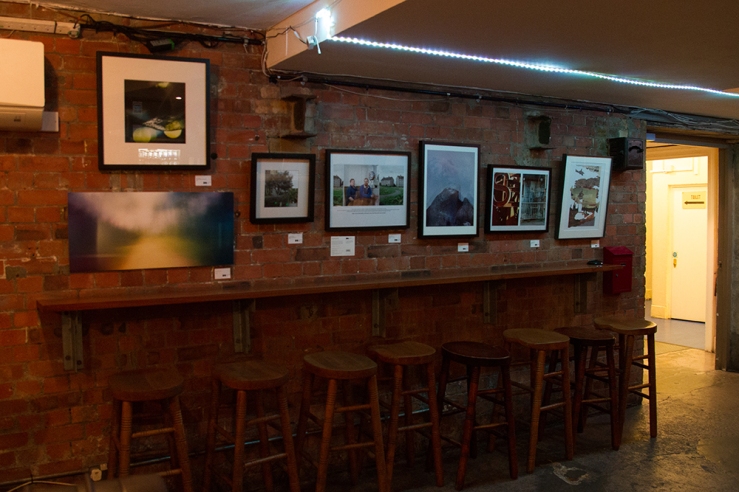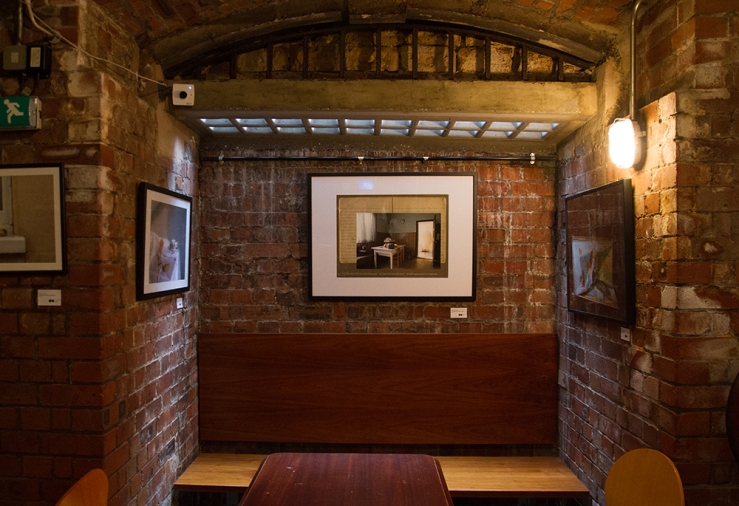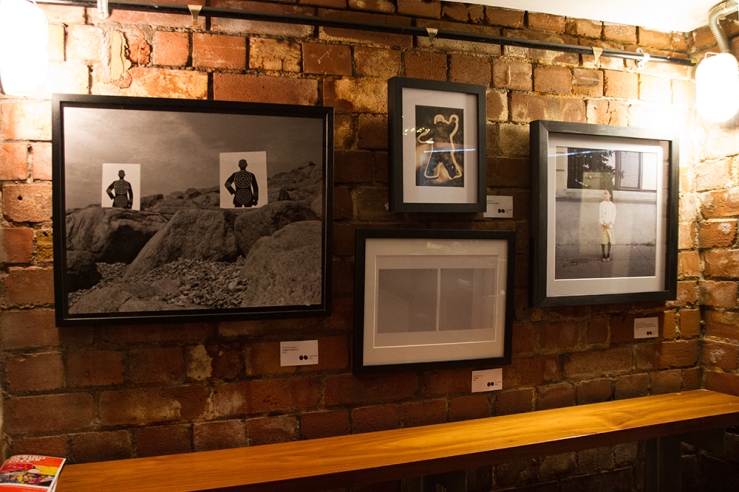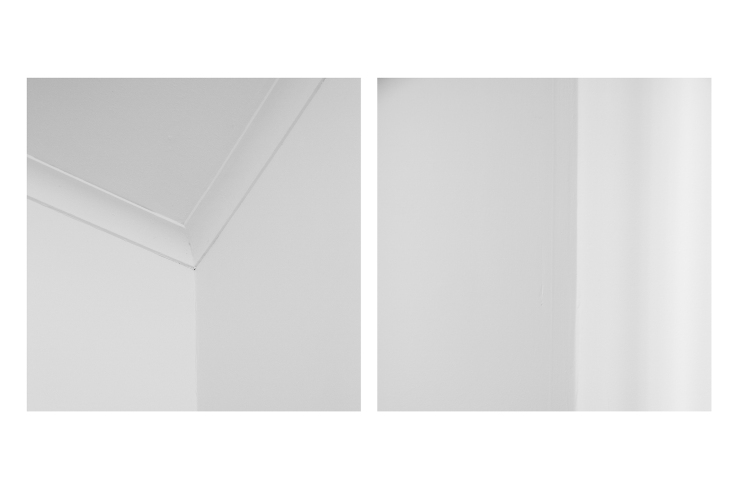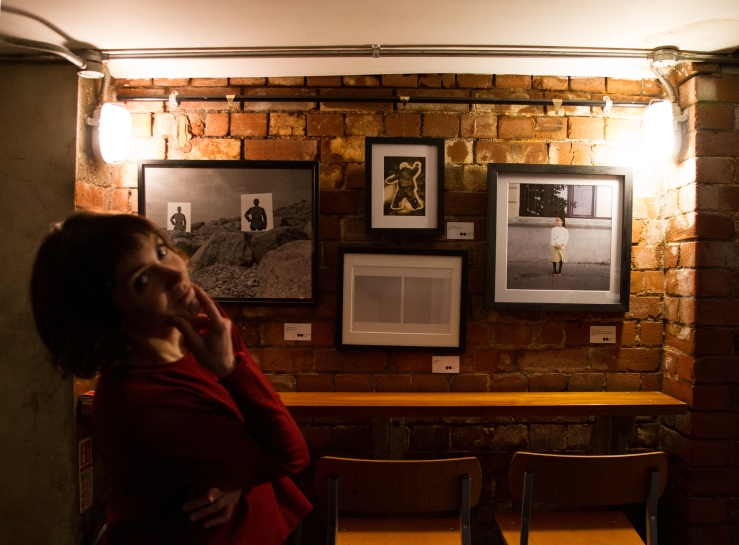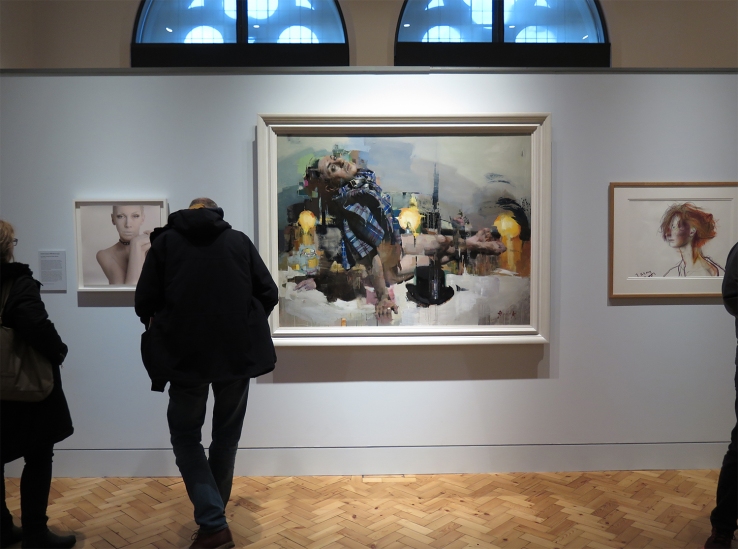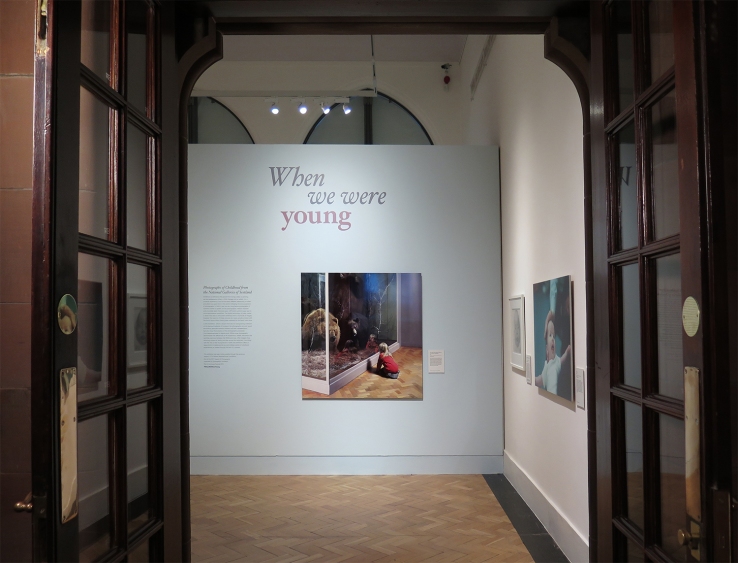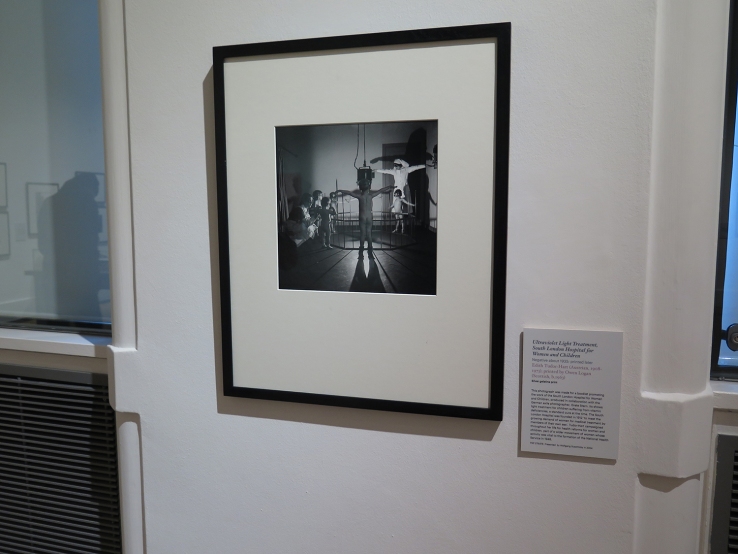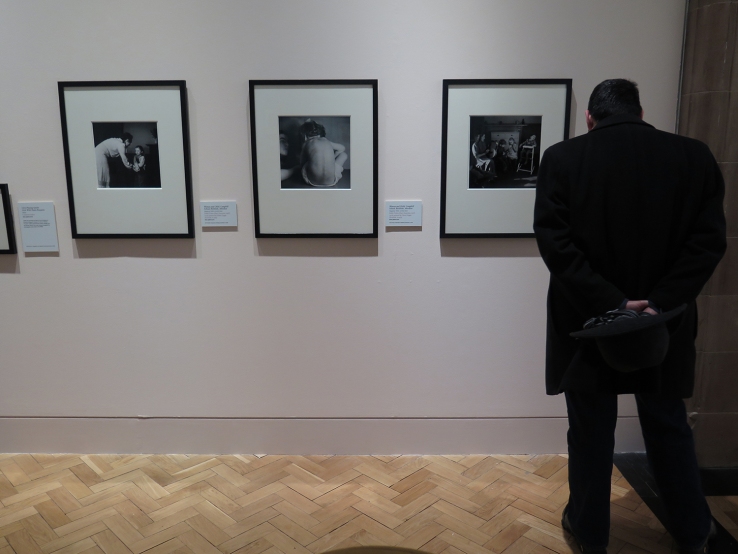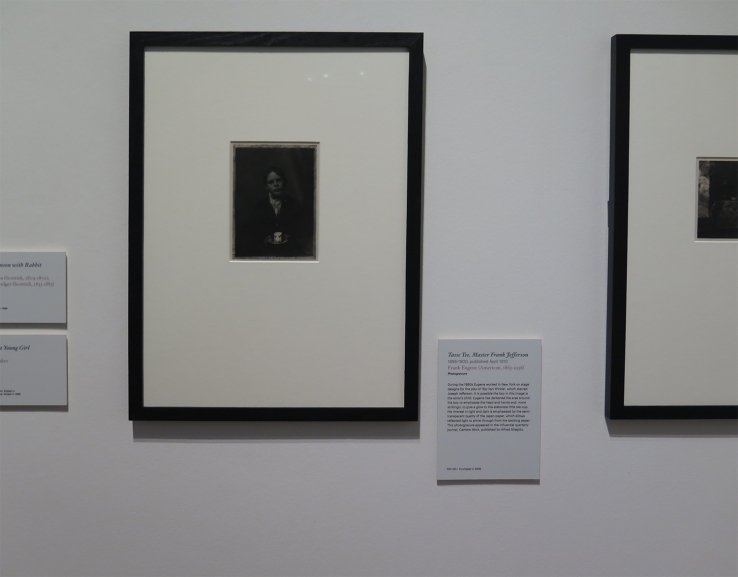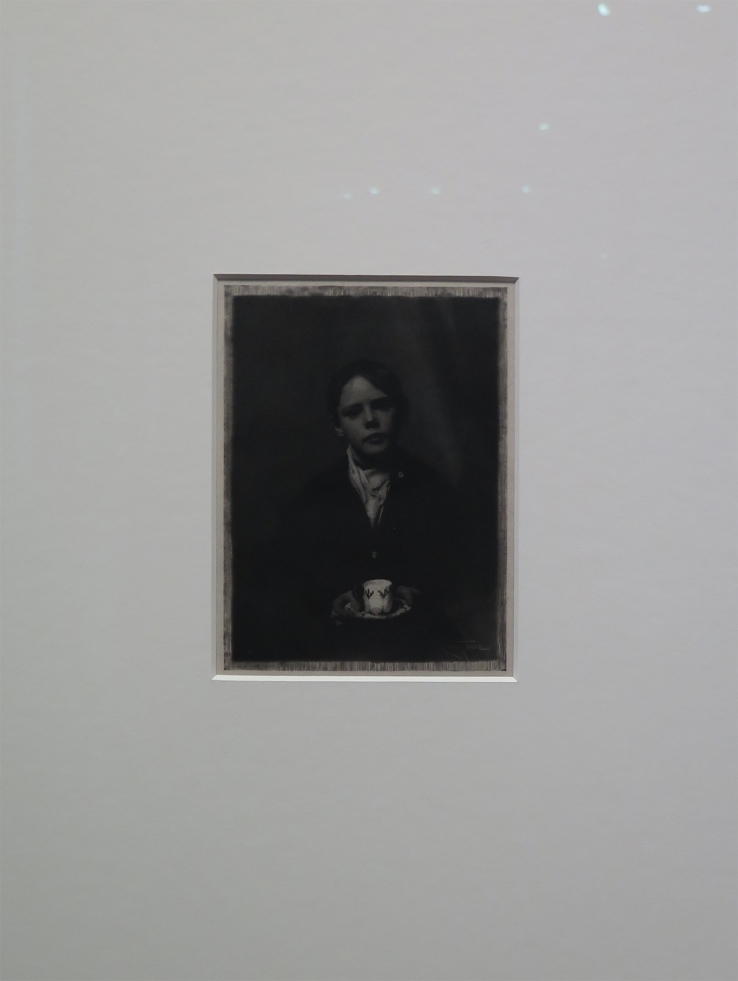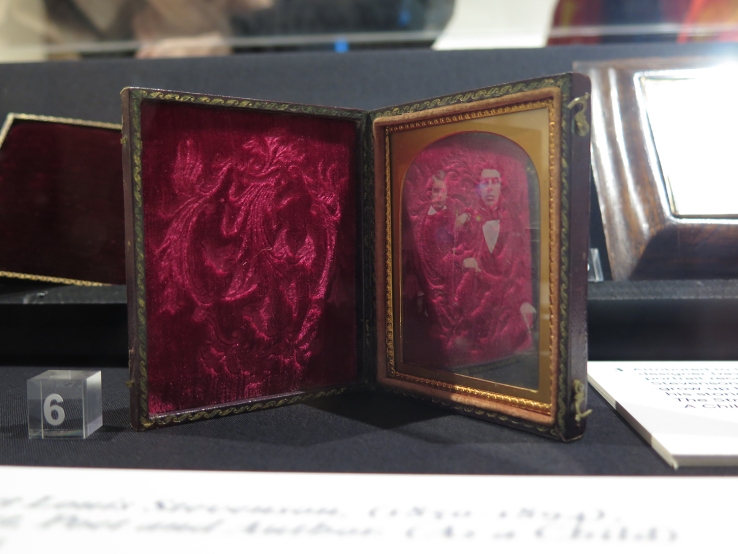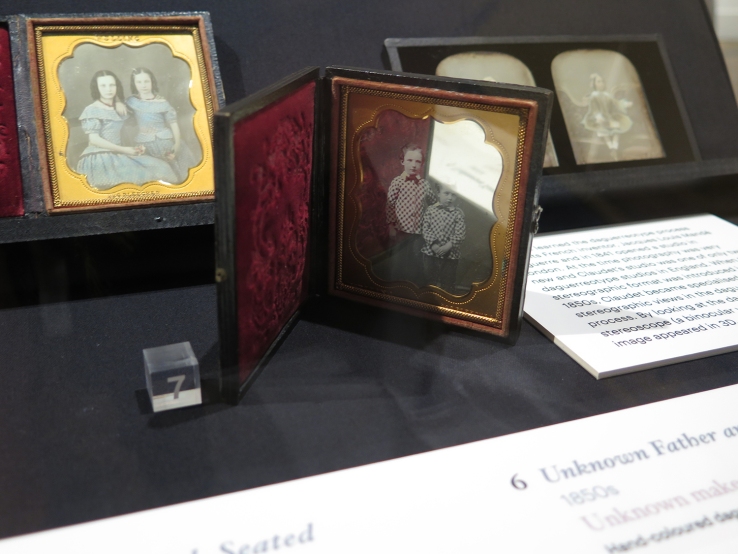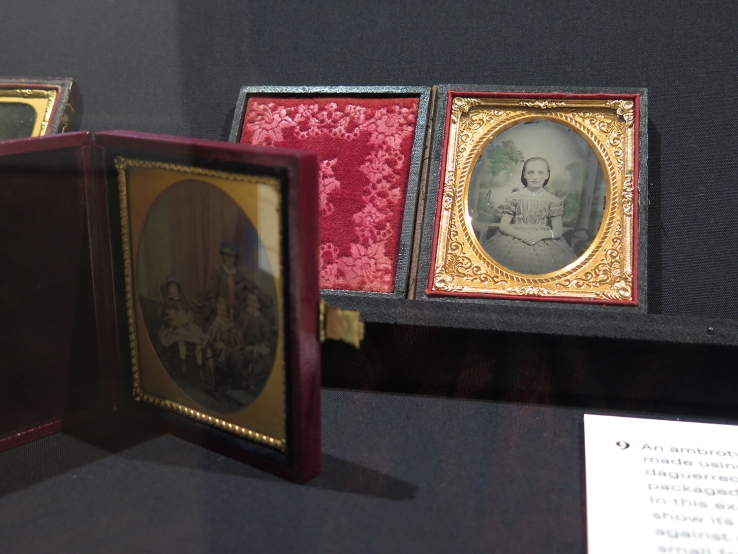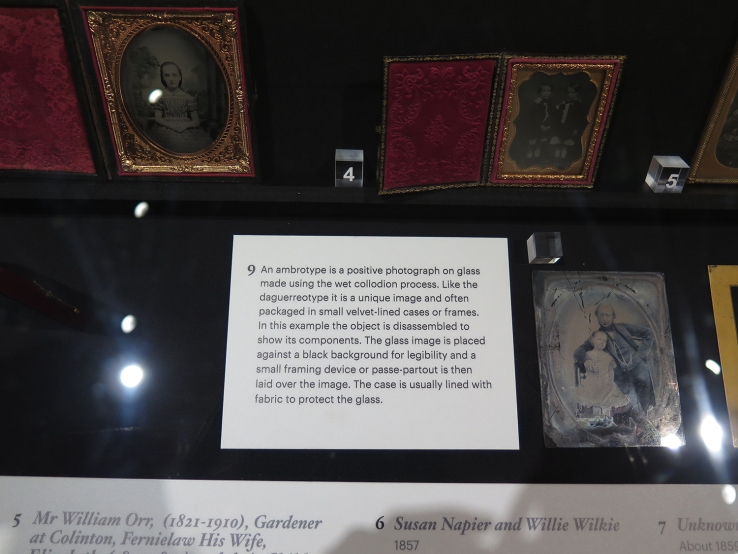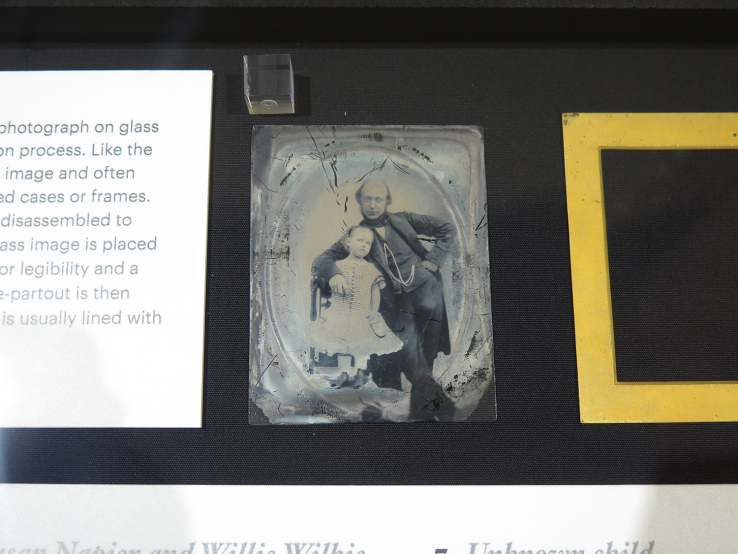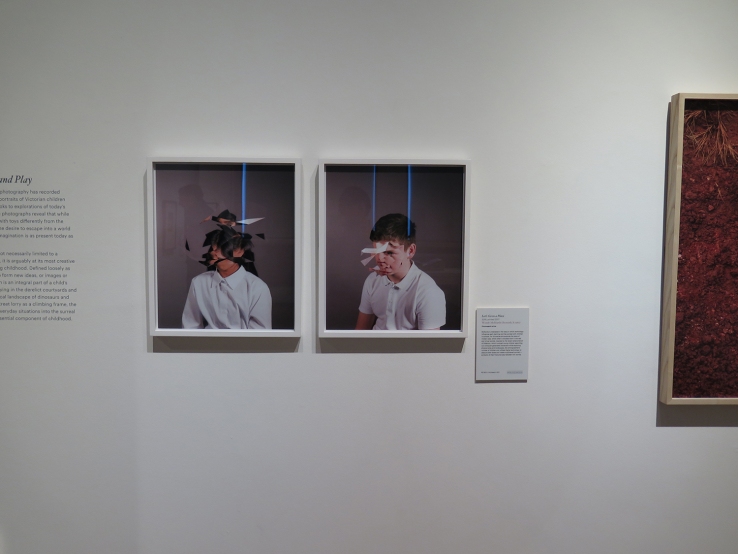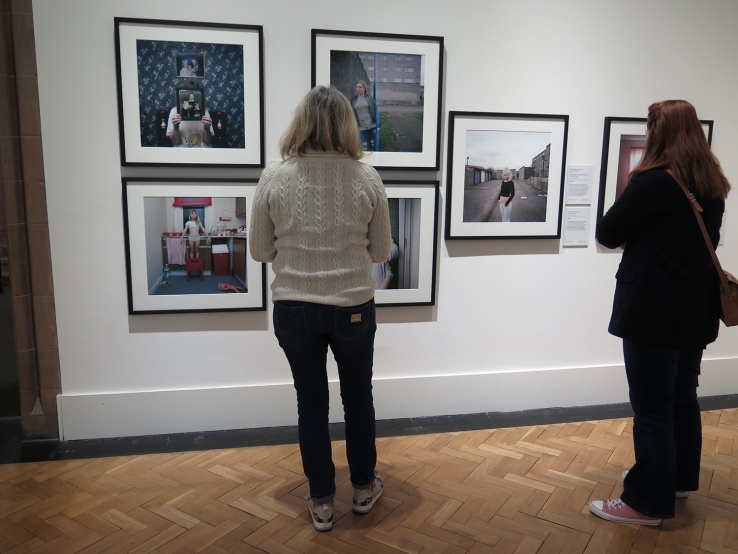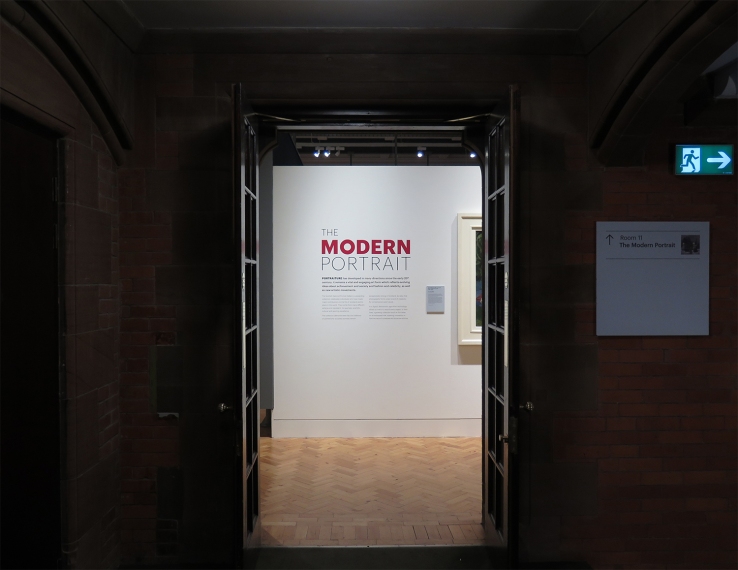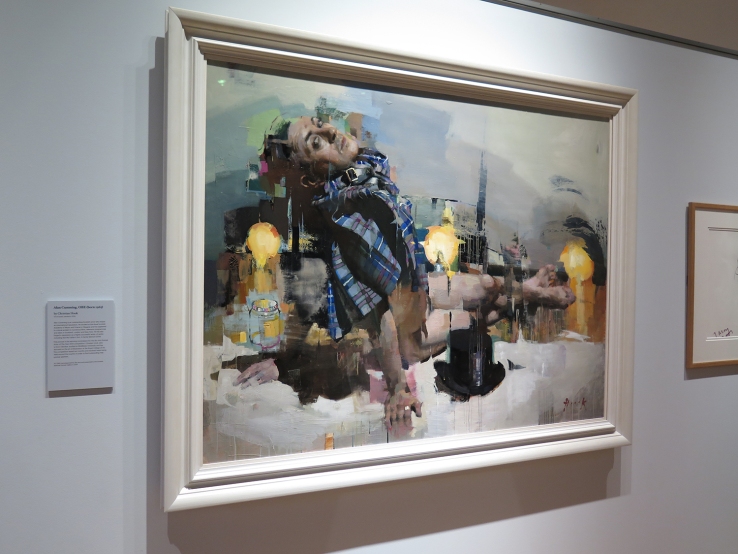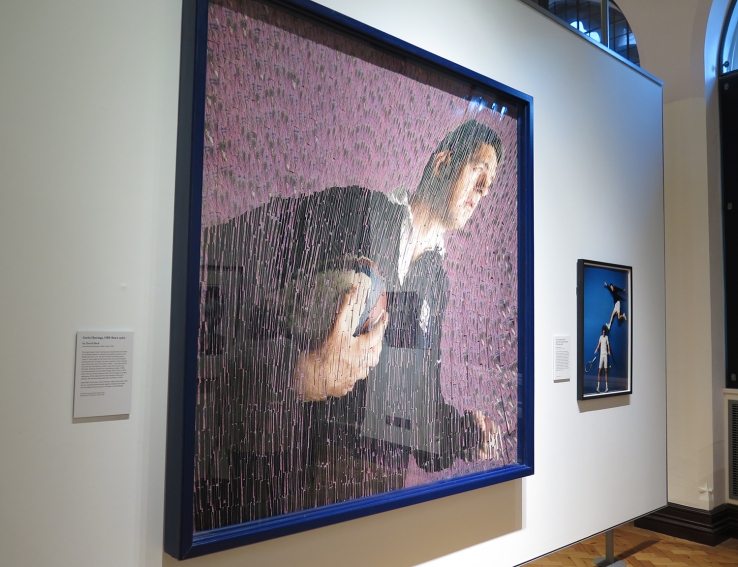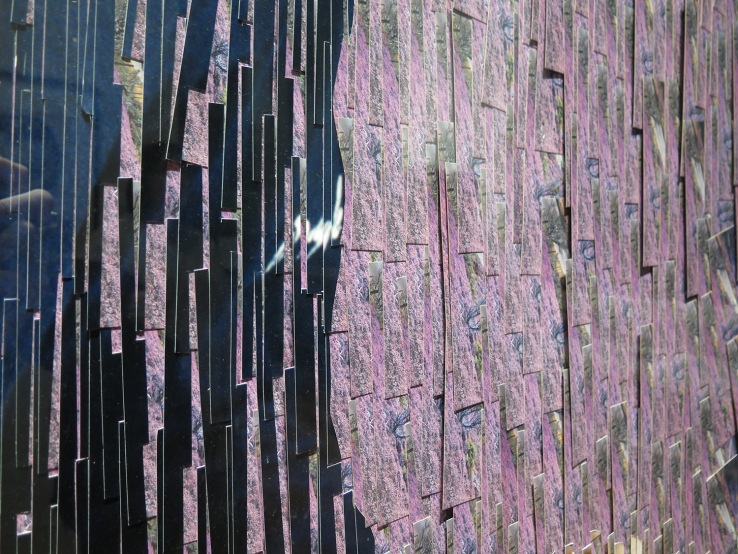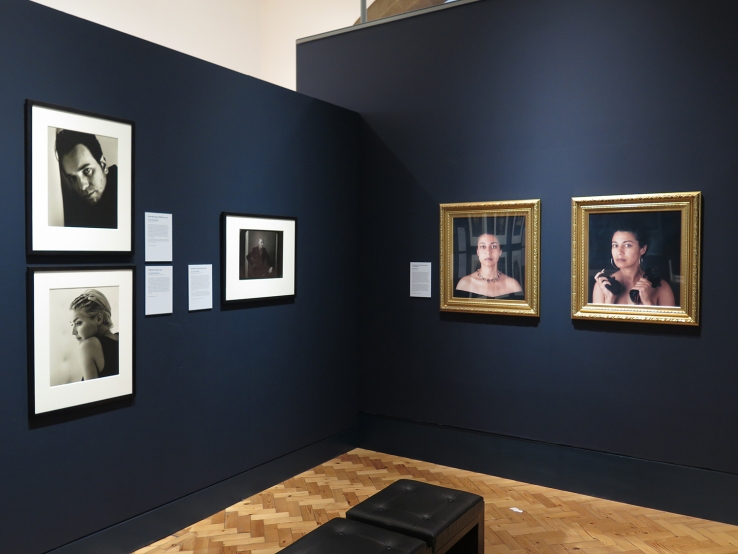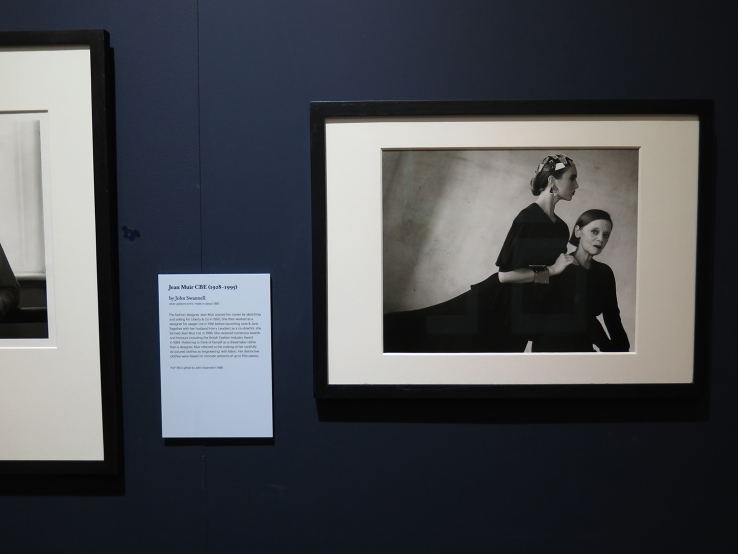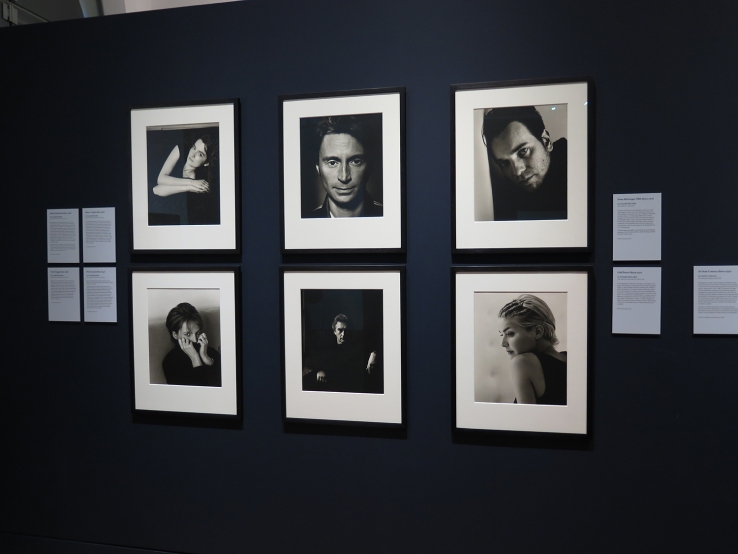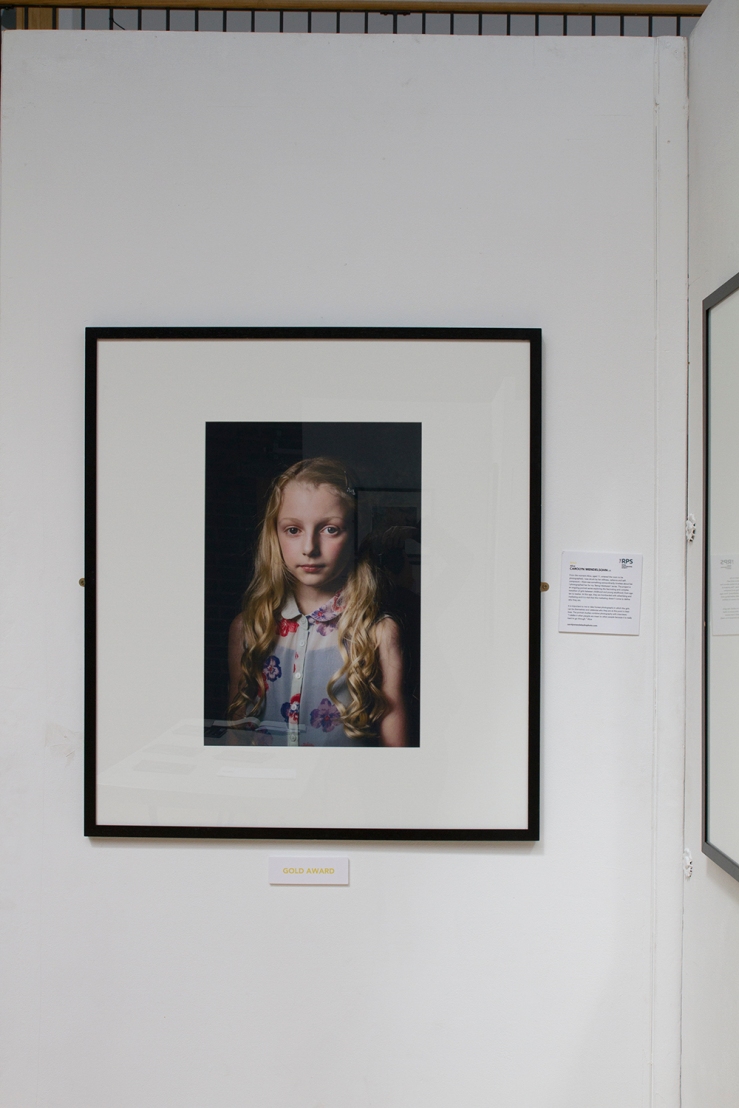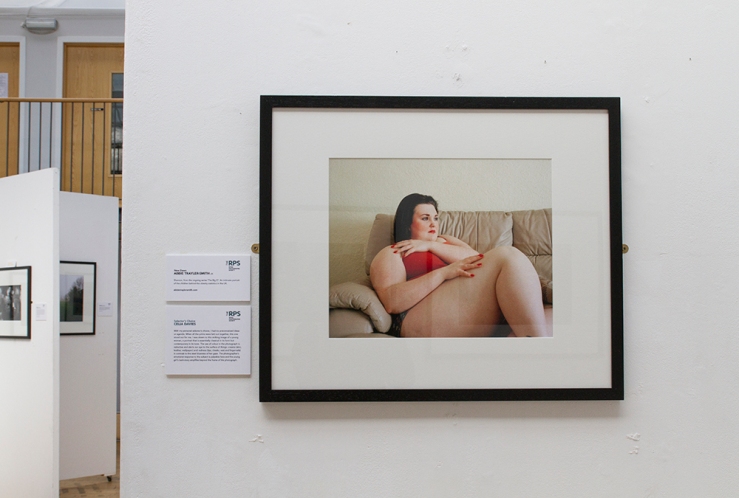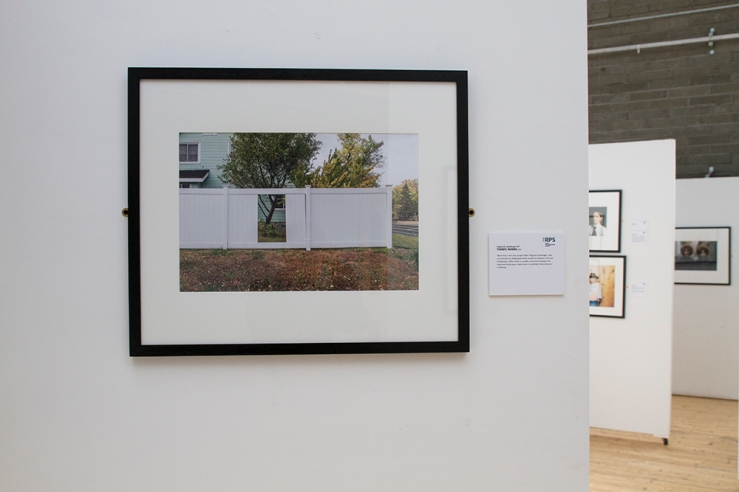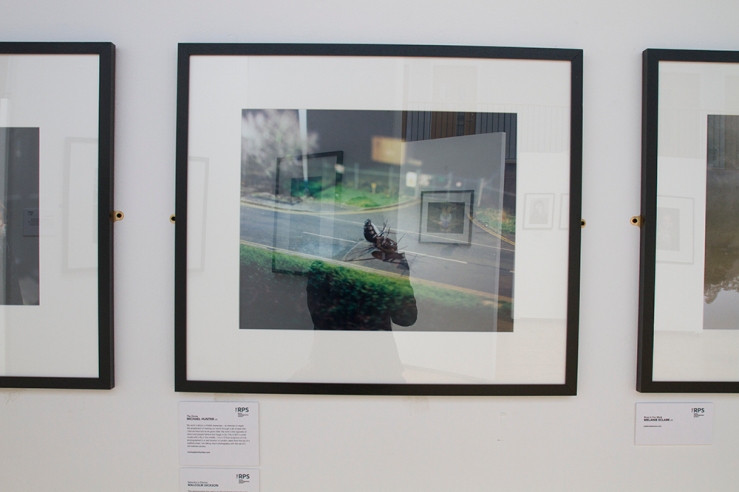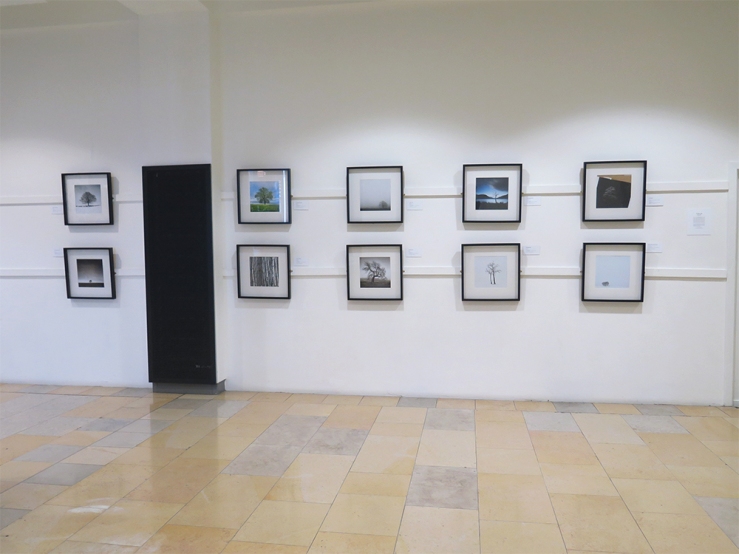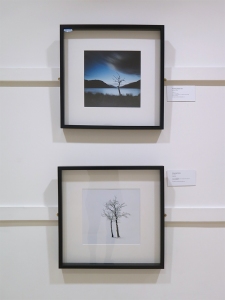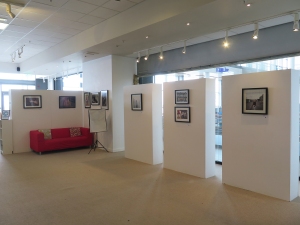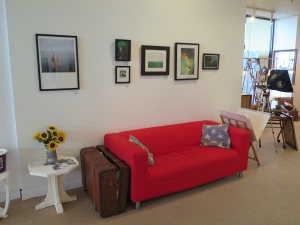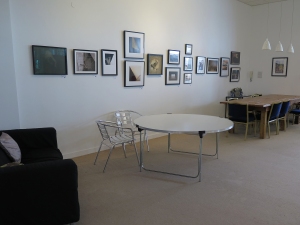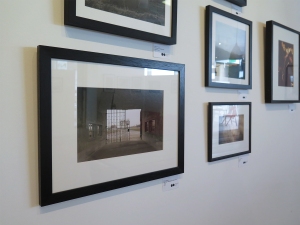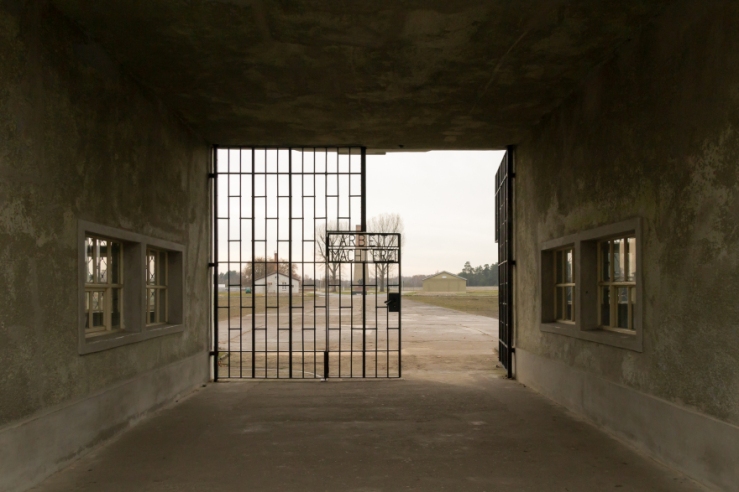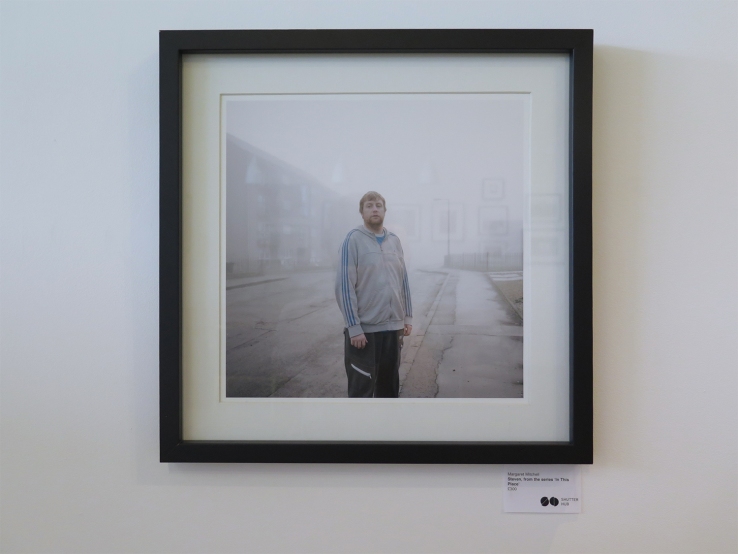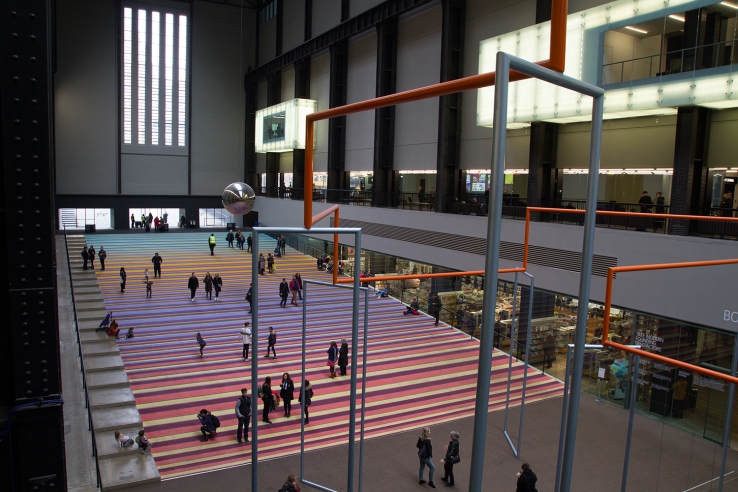
This has been my first visit to Tate Modern in London, which I have planned as part of a two day trip in middle February. There was one work I was looking forward to see: Tehching Hsieh’s One Year Permonance 1980-1981. I discovered his work after submitting Assignment 2 and as part of the artists recommended for further research. I do admire photographic pieces that involve performance, specially if the performance is done by the artists himself. In this case, the length of time the work has taken, the commitment, the social references and the visually engaging presentation, makes this one of my favourite photographic work till this date. During the course of a year, Hsieh took an hourly picture of himself and recorded the time by punching a time-clock simultaneously. The installation shows through a projector a fast forward moving sequence of all the photographs. He also recorded the times he missed the clock and the reason why (which gives another insight in perhaps his level of excitment during the project, the ability of waking up in time depending on the month or other environmental conditions…). I took several photographs of this work:
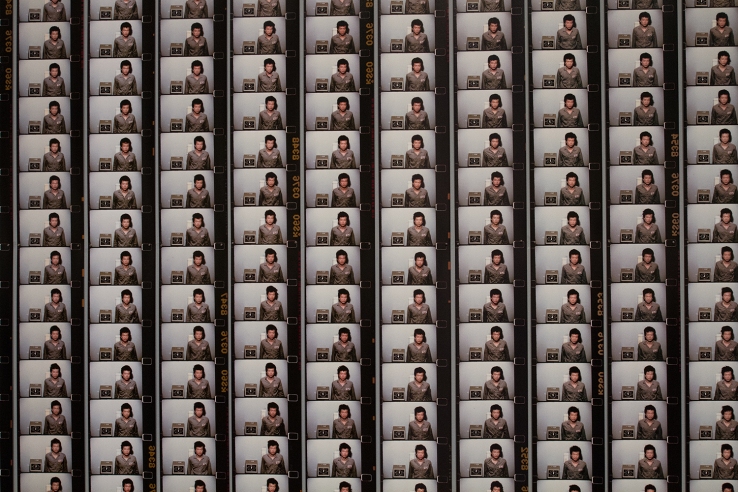
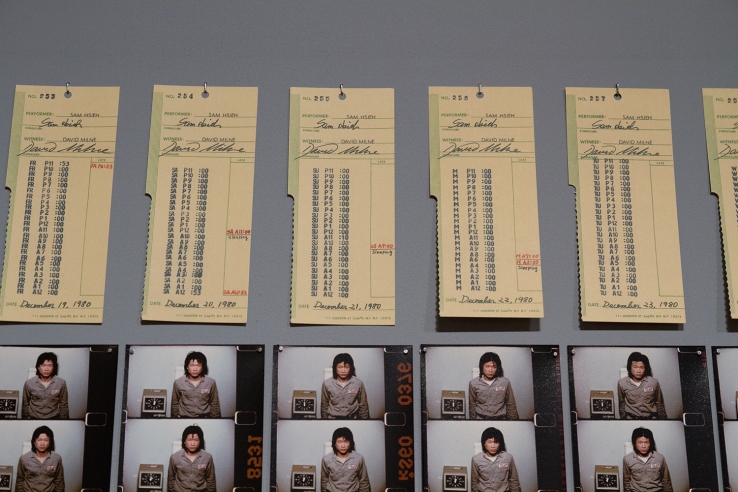
The area of the Tate where Tehching Hsieh’s work is displayed is labelled as “Performer and participant”. As I have mentioned above, this is what I find most enjoyable from the photographic practice and so many of the works exhibited in this dedicated part of the museum caught my attention. Following with these works, Pak Sheung Chuen’s display consists in a dark room where visitors are invited to use their camera flash to experiment the images the artist took on a trip to Malaysia. In this case, the photographer spent his time blindfolded, guided buy his mother and other people throughout the country; an experience that he recorded with his camera as the only visual aid. The engagement with this work is instant. The need to see what is it there, the frustrated attempt to visualise anything in detail before the camera flash vanishes, and the adventure of discovering the images exhibited (on the LCD) once they are not in front of the viewer; it all contributes to the experience and helps appreciating the means of the work.
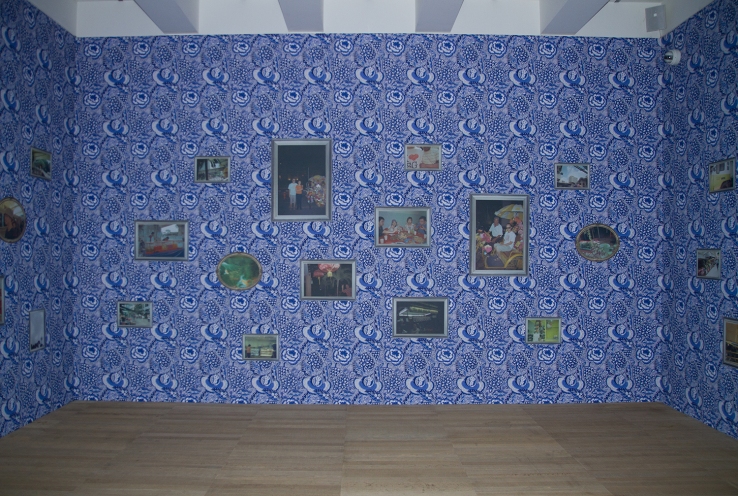
Continuing with the work about photography and performance, I discovered the images by Czech artist Jirí Kovanda. Socio-political circumstances lead this artist to re imagine his performative work, which became in a way silent and unseen. By leaving traces and creating subtle changes in the environment, Kovanda creates a series of images documented these little proofs of his existence that would inevitable fade one day, probably unnoticed. I think this is beautiful work, not only because of the final images but the process itself. This is the kind of work I consider as pure art. My images are not great, but they can be fully appreciated here.
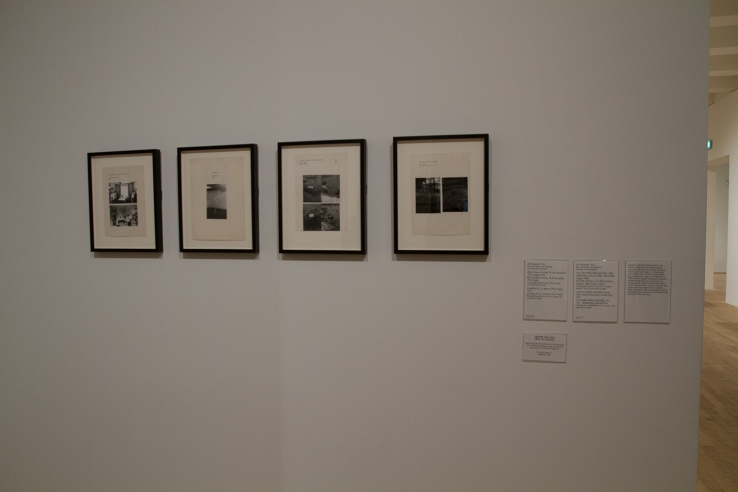
Another major discovery for me during my visit is the Portuguese artist Helena Almeida. There is an extensive collection of exquisite drawings by this artist exhibited here. The simplicity of the traces and the images represented contrasts with the captivating narrative that takes the viewer along the sequence. I can’t quite explain what I find so fascinating in these, but I could see each little scene translated into a photograph, a film or a collection of stills from a short movie. Almeida is an artist that I am committing to research in more depth.
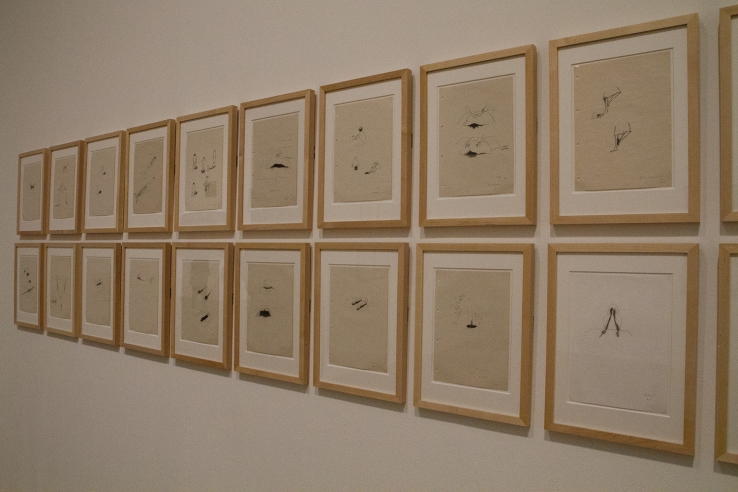

Another photographic work that I have enjoyed seeing are the series Light Sources (James Welling) and Sun Photographs (Zoe Leonard).
Leonard creates images by shooting directly into the sun, which are then handprinted and hanged unframed. This presentation really got me and I really appreciated the vulnerability of the photographs this way (I had the feeling that anyone could take them down the wall) but it also reduces the perception of each print as something distant, bringing to the viewer the idea of craftsmanship and process of creation.
Welling’s images are clean and effective, presented in a highly contrasted blackened white that brings up beautiful textures. In his Light Sources series, Welling points the camera towards the origin of the light (just as Zoe Leonard shooting towards the sun but with a more varied selection of sources). I saw here another interesting point for presentation of work (note the image above -left- with two radically different sized prints of images from a common project).
To summarise, I would like to leave here some images of artwork exhibited at the Tate that I enjoyed greatly seeing, as these are pieces or artists that I admire and that I have not had the change to see before in a museum:
Resources:
Tate. (n.d.). Jiri Kovanda born 1953 | Tate. [online] Available at: http://www.tate.org.uk/art/artists/jiri-kovanda-10668 [Accessed 2 Mar. 2018].
Tate. (n.d.). Tehching Hsieh – Display at Tate Modern | Tate. [online] Available at: http://www.tate.org.uk/visit/tate-modern/display/performer-and-participant/tehching-hsieh [Accessed 2 Mar. 2018].






